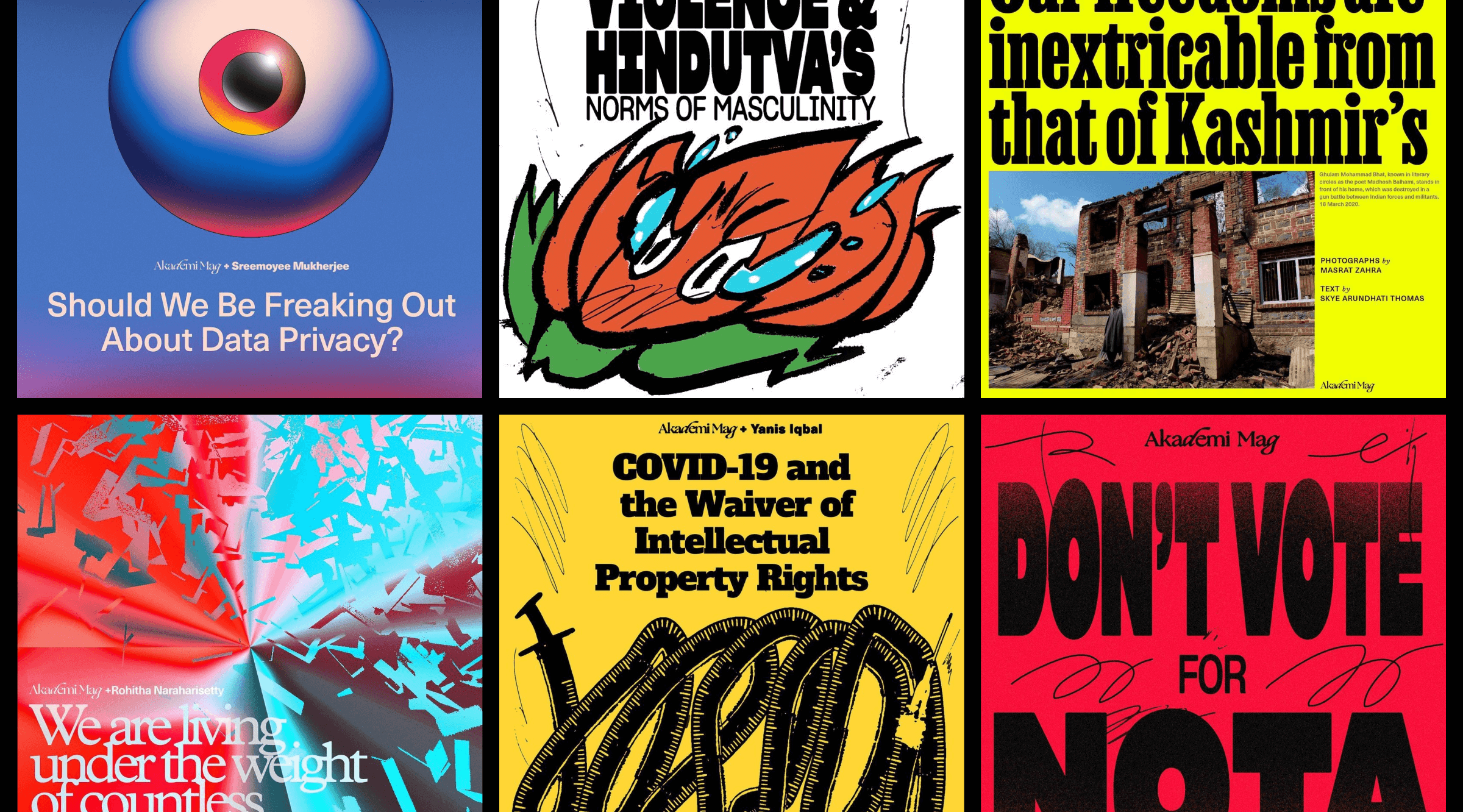Leveling design through sociology: Charu Pragya on her research of the South Asian design industry
Meet the ReadyLaunch grant recipient who merged social research, design, and a passion for driving change in the industry through her project.

Charu Pragya isn’t your typical design grant recipient—she’s not a professional designer. As a labor researcher, Charu brings an outside perspective to the industry, aiming to create meaningful change. In an interview, Charu told us how her research on the South Asian design industry began, how she used a design-focused political magazine to influence socio-political narratives, and why the feminization of the industry can be a double-edged sword.

From theory of labor to real-world research
My academic background is in philosophy. I pursued a Master’s in Philosophy at Columbia University from 2017 to 2019. A lot of my academic work during that period focused on labor in theoretical respects, studying Fichtian and Hegelian notions of labor and subjective experiences in the economy. After that, I worked as a tech-policy researcher on projects with the ILO (International Labour Organization), GIZ (German Agency for International Cooperation), and briefly with the World Bank, focusing on labor in the platform economy, particularly in India. We looked at how specific groups of labor market participants navigated the opportunities digital platforms offer for job creation and economic participation, particularly in countries with limited formal employment opportunities.
After that I moved on to work as the Head of Research at a design agency based in New Delhi, where I transferred my research skills onto user experience and digital interface design. And in March of this year, I set up my own agency with a group of designers. We focus on user interface and product strategy work, but hope to expand into more speculative and research-backed design methods.
Entering the forgiving design world
In early 2020, I started a project called Akademi Mag. The idea was to use design as a tool to influence socio-political narratives through a heavily design-focused political magazine. This project led me to work closely with designers and artists, even though I wasn’t formally trained in design. It gave me access to many designers I’m now speaking with. Unfortunately, we had to shut it down due to a lack of funds and bureaucratic issues with receiving foreign funds. We wanted to pay collaborators at international rates, but the Indian government had started limiting the licenses needed by nonprofits to accept foreign funds, making it financially untenable.
Back when we were publishing Akademi, I became involved as a designer in more of an art direction capacity. I didn’t have the expertise, but I had the interest. I would liaise between the editorial and visual sides, explaining how we wanted to represent stories visually. I didn’t start designing myself until later, during my work as a researcher in smaller think tanks with limited visual budgets. I began making websites and social media material.
Now, with my new studio, Public Knowledge, I handle a lot of the design work myself, alongside my colleagues and collaborators.
I haven’t been formally trained, but design is forgiving in that it allows you to step in first and then figure out what you’re doing.
This project I applied to ReadyLaunch with—a research on the state of the design industry in South Asia—has been brewing in my head for a while. Back when I was a tech policy researcher, I often thought about how that work might translate to fields like design and illustration. I’d tried to create my research portfolio on Readymag a few years ago, and we used it at Akademi Mag too at some point. So when I saw the grant announcement on Instagram, it all came together.
Research challenges and preliminary findings
My research about the state of design in South Asia is a personal project in terms of research itself, but I’m enlisting help from agency members to produce some of the artifacts and visuals. The idea was to use the same space as both a participatory research portal and a place to distribute the final analysis. The team at my agency has been very supportive in helping me overcome the technical challenges and craft visuals around the project.
It’s too early to discuss statistically significant results, but I can share some preliminary findings. I’ve been looking at socio-economic mobility in the design industry, and how it’s shaped by education, networks, and resources. In India’s stratified economy, there’s a funnel in terms of who enters the design field and an even narrower funnel in terms of career progression. Despite their privilege, many still face precarity due to the informal nature of freelance work. Global labor markets have a huge influence on India’s design industry. Indian designers are often subcontracted for projects from Western markets due to lower costs, but this also results in wage suppression compared to international standards. Moreover, there is a growing trend of outsourcing creative work to India, which is both an opportunity and a challenge, as it brings in more projects but often at lower rates and little to no job security.
There’s also anxiety about AI’s impact on design work, with some seeing jobs shifting away from traditional tasks to more engineering-related roles. UI/UX designers are looking to broaden their skill sets to remain competitive.
Gender is also critical here.
Design in India is often seen as a feminized space—considered less serious and more suited to women because it’s viewed as work that can be done from home.
Women’s participation in the broader labor market is low, but in design, it’s disproportionately high. Yet, even within design, spaces that are more technical or lucrative are dominated by men.
Hopes for growth and development
I see the project evolving in the future. I want it to be more than just a survey of 50 people followed by an analysis. I’d like it to be an active, ongoing survey where people can continue to participate, and where the analysis updates over time. Capturing anything relevant in India’s massive labor market with just 50-60 participants is difficult. I’m hoping this becomes a dynamic project that grows and adapts as new insights emerge, a portal that acts as a dual-purpose platform for both research dissemination and data collection, a “living” repository that will allow users to not only view results but also actively participate in the research. I’m hoping it democratizes and broadens data collection by involving a continuous feedback loop where respondents influence future analysis.
Success would be creating more transparency and discourse around the design industry in India.
People don’t talk about their earnings or contractual standards, and this lack of discourse perpetuates informality and inequality.
If this project sparks more conversation and reflection around these issues, I’d consider that a success.